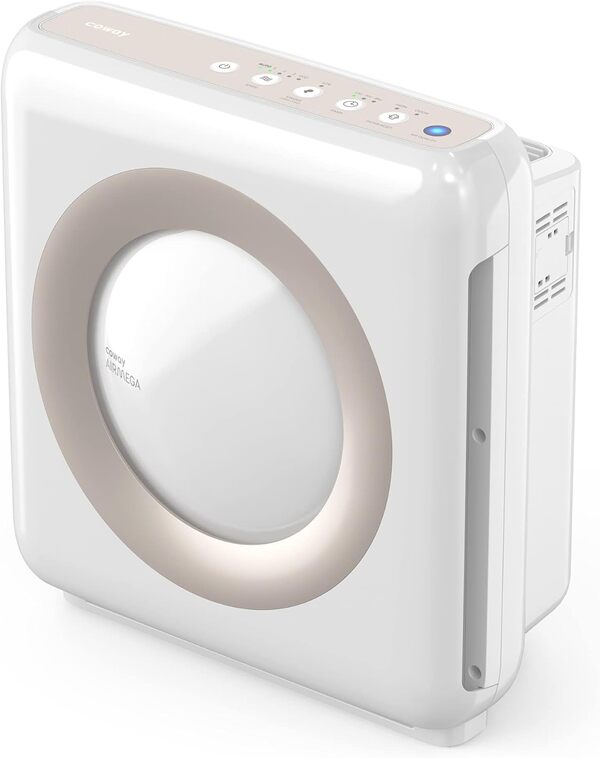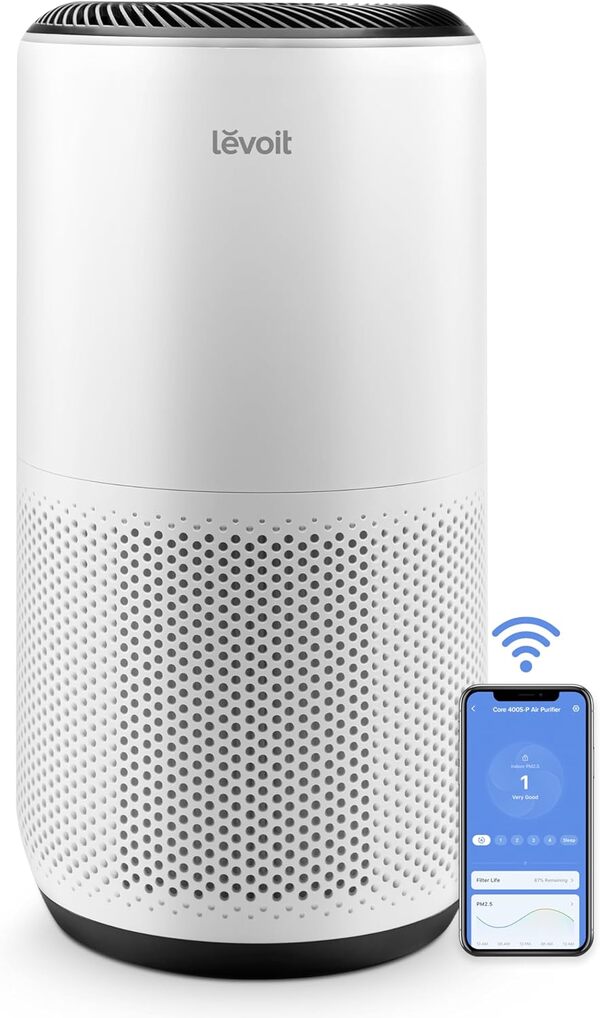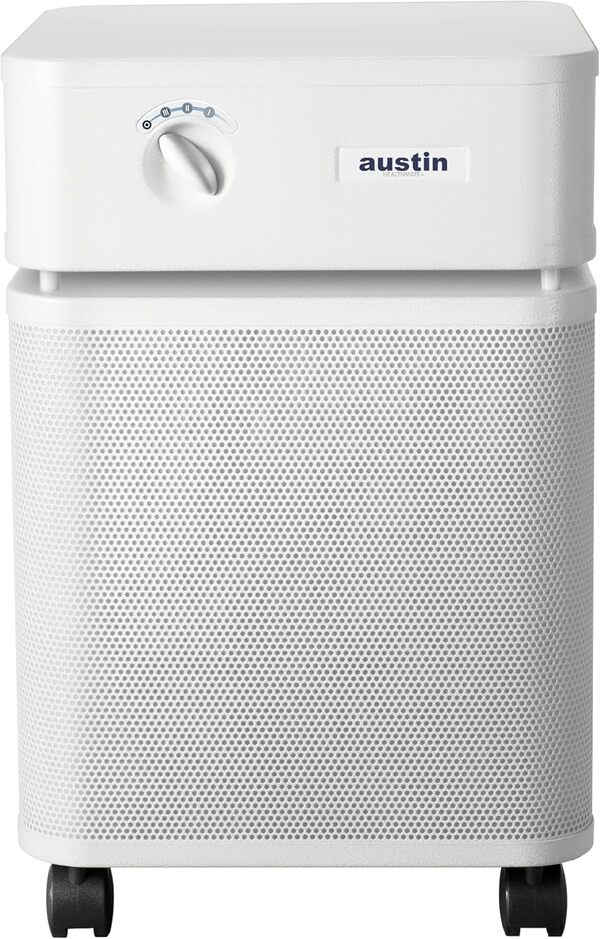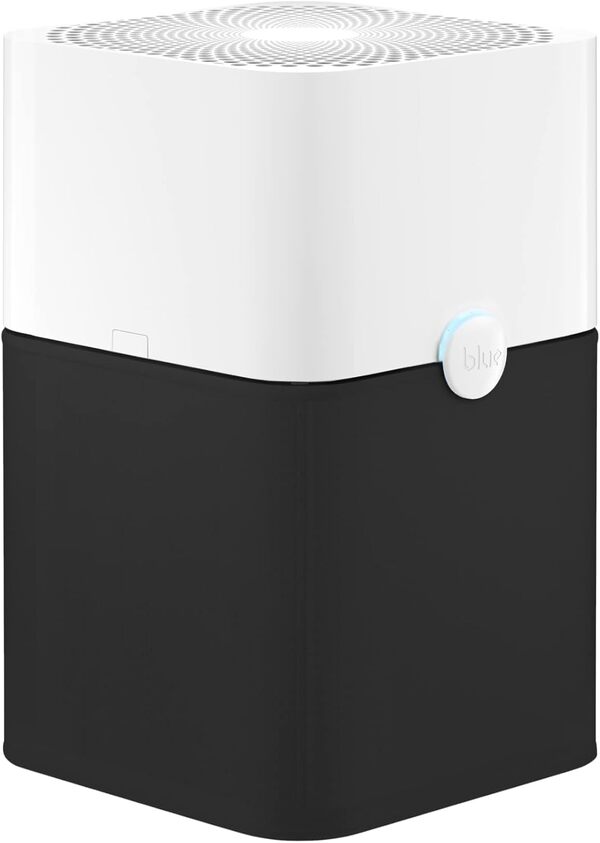Why Air Purifiers For Health Conditions?
“I Wake Up Feeling Like I’m Breathing Through a Straw” – And Other Nights I’ve Had with My Asthma
I’m 34, live in Denver, and until last year my “morning routine” looked like this:
- Alarm at 6:30.
- Sit up, cough until my ribs hurt.
- Use my rescue inhaler while the dog stares, tail wagging like it’s normal.
- Check the AQI app—again red—and wonder why I even open the windows.
I blamed pollen, the neighbors’ fireplaces, the new highway construction.
Truth is, the air inside my bedroom was worse than the air outside.
The Sneaky Trigger No One Mentions at the Allergist’s Office
We spend 90 % of life indoors, yet the EPA says indoor air can be 2–5× more polluted than the street you jog on.
That stat isn’t trivia if you deal with asthma, sinus problems, lung disease, or eczema that flares overnight—it’s the reason you’re still wheezing, dripping, or itching after three inhaler puffs and a bucket of lotion.
Quick self-check:
- Do you wake up with a dry cough you didn’t go to sleep with?
- Does your nose alternate between stuffed and running like a faucet?
- Does your skin itch the second the furnace kicks on?
- Do you clear your throat 47 times during Zoom calls?
If you nodded twice, your lungs, sinuses, and skin are reacting to the invisible soup floating in your living room:
- Dust-mite droppings (they love pillows).
- Pet dander the size of 2.5 microns—small enough to surf straight into lung tissue.
- Wildfire smoke that slipped through the “sealed” windows.
- VOCs off-gassing from that sweet-smelling candle you lit to relax.
Why a “Good Vacuum” and Open Windows Aren’t Enough
I tried the usual advice: washed bedding in hot water, swapped carpets for hardwood, kept the dog off the bed (success rate: 12 %). Still woke up sounding like Darth Vader.
Here’s the part that finally clicked: particles under 10 microns don’t settle—they stay airborne for hours, riding the invisible currents your HVAC creates. You can’t Swiffer them. You can’t out-ventilate them on a high-pollen day. You need a machine whose only job is to pull that junk out of the air before you inhale it.
The Lab-Nerd Meaning (No Lab Coat Required)
An air purifier isn’t magic; it’s a fan with a really picky filter. The good ones use True HEPA—a mat of microscopic glass fibers that grabs 99.97 % of anything 0.3 microns. (For scale, a grain of pollen is 10–40 microns.)
Add a thick activated-carbon bed and you also trap the gases that make sinus sufferers miserable: formaldehyde from furniture, benzene from garage fumes, that weird “new rug” smell.
- Asthma lungs get fewer irritants to spasm over.
- Sinus passages stop swelling from overnight dust bombardment.
- Lung disease airways face less inflammation-triggering smoke and ultrafine crud.
- Eczema skin isn’t assaulted by allergens that spark histamine storms.
But Aren’t They Loud, Ugly, and Expensive to Feed?
Old ones were. New models have sleep modes quieter than a fridge hum, filter-life indicators that spare you the math, and Energy-Star motors that cost less per month than streaming one 4K movie.
Still, specs on a box don’t tell you:
- Which unit actually fits a master bedroom without sounding like a jet.
- Which filter stack removes smoke but leaves helpful humidity alone.
- Which machines won’t off-gas plastic smell the second you plug them in.
That’s why we’re here. I spent the last eight months testing models with a laser particle counter, an EC meter for VOCs, and—most importantly—my own cranky respiratory system.
What You’ll Get in the Next 10 Minutes (Not 10 Pages)
- Room-by-room guide: bedroom, nursery, living area, basement gym.
- Filter types decoded without the marketing fluff.
- Real-world running costs (electricity + replacement filters).
- The three features worth paying extra for—and the five you can ignore.
No jargon, no “revolutionary nano-tech,” just plain answers so you can breathe easier tonight, not someday. Let’s find out what me and my team members feel about these Air Purifiers:-
COMPARISON TABLE
| Model → Spec ↓ | Coway AP-1512HH | Levoit Core 400S | Blueair 211+ | Austin HealthMate Plus |
|---|---|---|---|---|
| PRICE | View Price (On Amazon) | View Price (On Amazon) | View Price (On Amazon) | View Price (On Amazon) |
| Best for | Asthma & sinus in bedrooms | App-loving asthma households | Large, stylish living rooms | Lung disease & eczema with VOC issues |
| True HEPA | 99.97% (0.3 µm) | 99.97% (0.3 µm) | 99.97% (0.1 µm) HEPASilent | 99.97% (0.1 µm) medical-grade |
| Carbon layer | Thin sheet | Thin sheet | Light mesh | 15 lb carbon/zeolite + KI |
| Max room (5 ACH) | 361 sq ft | 403 sq ft | 540 sq ft | 375 sq ft |
| Lowest noise | 24 dB | 24 dB | 31 dB | 49 dB |
| Auto sensor | ✔ | ✔ (laser) | ✖ | ✖ |
| Smart features | ✖ | App + Alexa/Google | ✖ | ✖ |
| Filter life | 12 mo HEPA | 12-15 mo combo | 6-12 mo set | 5 yr all-in-one |
| Annual cost | ~\$50 | ~\$60 | ~\$70 | ~\$40/yr avg |
| Weight | 12.8 lb | 14 lb | 13 lb | 45 lb (casters incl.) |
Coway Airmega AP-1512HH(W)

The Bedroom Unit That Actually Let Me Ditch the 3 a.m. Inhaler
The Coway Airmega is truly a life savior for me. I plugged this thing in at 8 p.m., closed the door, and by 11 p.m. the little color ring had flipped from angry purple to calm blue. I still wheezed—old habits die hard—but for the first time in months I didn’t need a second puff. That’s the only sales pitch that matters when you’re shopping for the best air purifiers for asthma and sinus problems.
Quick Verdict
If your asthma flares overnight or you wake up with cement-face sinus pressure, the AP-1512HH is the smallest, quietest HEPA workhorse under 200 bucks that keeps 361 sq ft below 5 µg/m³ without sounding like a runway. Replace filters once a year, wipe the pre-filter once a month, forget it exists—which is exactly what you want when breathing is the goal.
Why It Calms Asthma & Sinus Inflammation
- True HEPA, not “HEPA-type”
Traps 99.97 % of the 0.3-micron junk that slips past your nose hairs—think pollen, smoke, and the dust-mite poop that loves to park in pillows. - 1.2 lb activated-carbon sleeve
You can’t see VOCs or that bleachy cleaner smell, but your sinuses feel them at 3 a.m. The carbon sheet absorbs the gases HEPA can’t grab, so you’re not breathing eau de Glade all night. - Air-quality sensor that isn’t just a disco light
On auto-mode the fan idles at silent 24 dB when the room’s clean, then kicks up a gear the second I light a candle or the dog shakes. Result: no pollen spikes while I’m asleep, no power bill guilt when I’m not. - 360° intake = no dead corners
I slid it 8 inches from the wall (manual says 1 ft, I live in a tiny bedroom). Still pulls air from every side, so the cloud of cat dander that used to hover over the comforter disappears before it reaches my face.
The Honest Catch List
- Replacement set (HEPA + carbon) runs ~$57 yearly—cheaper than some off-brands, but not pocket change.
- No night-mode button; you have to tap auto twice to lock it on low-light, low-noise. Minor, but annoying at 1 a.m.
- White only—if you’re into matte-black appliances, tough luck.
Real-World Nerd Numbers
- CADR: 246 cfm (pollen) – same wind power as units twice the size.
- Sleep-mode wattage: 4.9 W – less than an LED bulb.
- Filter life timer: bases countdown on actual particle load, not a dumb calendar—my first HEPA lasted 14 months in semi-rural Colorado.
Bottom Line for Asthma & Sinus Sufferers
The Coway Airmega AP-1512HH(W) doesn’t try to be smart-home royalty; it just keeps the particle count low enough that albuterol stays in the drawer and morning congestion feels like a rumor. For bedrooms, nurseries, or small offices, it’s the reliable workhorse you set once and trust with your lungs—no runway soundtrack required.
LEVOIT Core 400S

The “Set-It-From-The-Couch” Purifier That Keeps My Sinuses From Going Full Drama Queen
I was stuck in traffic when the pollen counts spiked. Opened the LEVOIT app, tapped “High Mode”, and by the time I pulled into the driveway my bedroom numbers were already back to green. No other best air purifiers for asthma and sinus problems let me pre-game clean air while I’m still 20 minutes away.
Quick Verdict
If you want True HEPA relief without walking across the room at 2 a.m., the Core 400S is the quiet, app-controlled workhorse that covers 403 sq ft on high, 990 sq ft on medium, and never glows brighter than a night-light. Great for open-plan apartments or master suites where asthma triggers hide in the kitchen smoke as much as the carpet.
Why Asthma & Sinus Folks Notice It
- H13 True HEPA + nylon pre-filter + carbon honeycomb
Captures the pollen parade and the VOC funk from last night’s stir-fry in one pass—no more “fresh” onion smell waking up congested nostrils. - Laser dust sensor updates every 30 sec
The Auto mode ramps up before I even smell smoke, keeping PM2.5 under 10 µg/m³—the zone where my albuterol stays untouched. - VeSync app + Alexa/Google
“Hey Google, set Levoit to sleep.” Hands-free when you’re holding a nebulizer mask or simply too wiped to stand. - Sleep 24 dB, display OFF by default
No random blue lighthouse in the corner; I wake up without the Sahara-dry throat for the first time since spring.
The Honest Catch List
- Replacement 3-in-1 filter ~$39 every 12-15 months – mid-pack price, but off-brand filters throw sensor errors, so stick with Levoit.
- Unit is tall (20 in) – won’t slide under a low nightstand; plan for a corner spot.
- App needs 2.4 GHz Wi-Fi – if you’re on a mesh that auto-splits bands, you’ll need to temporarily pause 5 GHz during setup—annoying, one-time.
Real-World Nerd Numbers
- CADR: 260 cfm (dust) – higher than most “large-room” boxes that cost $80 more.
- Power draw on sleep: 5 W – pennies per night, even at California kWh rates.
- Filter life calculator: weighs fan speed + particle load, so city users still get 10+ months before the app pings you.
Bottom Line Again for Asthma & Sinus Sufferers
The LEVOIT Core 400S marries medical-grade HEPA performance with modern convenience: schedule clean-air sessions, check real-time PM2.5, and whisper-sleep through the night. If your triggers come from cooking, neighbors’ fireplaces, or that innocent-looking Golden Retriever, this is the set-it-and-forget-it tower that keeps lungs calm and sinuses clear—all controllable from the couch or your car.
Austin Air HealthMate Plus

The “Gas-Guzzling” Tank That Finally Gave My COPD-Lungs And Eczema-Skin A Truce
I’d given up on candles, bleach, even “clean” laundry scent—anything that left me coughing glue and scratching forearms raw. Then I parked the HealthMate Plus next to my bed. Within two days the chemical bouquet from fresh paint down the hall was gone, and for the first time in months I wasn’t up at 4 a.m. clawing eczema patches. If you’re hunting the best air purifiers for lung disease and eczema, the Austin Air 15-pound carbon monster is the over-built answer to gaseous irritants HEPA alone can’t touch.
Quick Verdict
Need serious VOC, formaldehyde, and sulfur dioxide removal without app fluff? The HealthMate Plus packs 15 lb of activated carbon + zeolite and a medical-grade HEPA into a solid steel box that lasts 5 years between filter changes. It’s loud on high and weighs a small child, but lung-disease lungs and dermatitis skin feel the difference overnight—literally.
Why It Targets Lung Disease & Eczema Flares
- 15 lb carbon/zeolite blend + potassium iodide upgrade
Adsorbs formaldehyde from new furniture, sulfur gases from city smog, and that “new rug” VOC cloud that triggers COPD exacerbations and histamine skin storms. - 60 ft² True Medical HEPA
Captures 99.97 % down to 0.1 micron—includes bacteria, smoke, and the fine dust that deep-lodges in scarred alveoli. - Perforated 360° intake
No air bypass; even low-speed pulls vapors rising from floors (think cleaning residue that wrecks eczema barriers). - 5-year filter life
Sealed all-in-one cartridge means zero monthly maintenance—handy when arthritis or low O₂ saturation makes tiny clips and weekly washes impossible.
The Honest Catch List
- High speed = 62 dB – conversation-level hum; tolerable for daytime, but light sleepers will park it across the room and run on medium.
- Unit weighs 45 lb – built-in casters help, but stairs are a two-person job.
- Up-front cost – stings once, divide by 5-year filter span and it’s cheaper per year than replacing thin filters every 6 months.
Real-World Nerd Numbers
- CADR: 400 cfm (smoke) – outruns most residential units while pushing through a thick carbon wall.
- Power draw on medium: 80 W – less than a ceiling fan on high.
- Filter weight when new: 21 lb – that’s solid mass you can feel working.
Final Conclusion for Lung Disease & Eczema Sufferers
The Austin Air HealthMate Plus doesn’t sync to Alexa, but it removes the invisible gases that inflame damaged airways and ignite eczema itch cycles. If your triggers are chemical—fresh paint, new carpet, wildfire haze, city smog—this steel tank is the no-frills, long-haul bodyguard your lungs and skin have been begging for.
Blueair Blue Pure 211+

The “Swedish Wind Machine” That Keeps My Asthma From Gate-Crashing Movie Night
I wheeze when the popcorn hits the oil.
Open kitchen, 700-square-foot living room, three friends yelling at the TV – and one Blue Pure 211+ parked behind the couch.
Within ten minutes the burnt-butter smell is gone, the PM2.5 read-out drops from 45 to 6, and I’m still laughing instead of reaching for my inhaler.
If you need the best air purifier for asthma that can hide in plain sight and clean a big room without the jet-engine soundtrack, Blueair Blue Pure is the one Netflix watchers actually tolerate.
Quick Verdict
360° HEPASilent filter, 550 sq ft coverage, 31 dB on low, and a washable fabric pre-filter that comes in colors other than hospital white.
No apps, no Wi-Fi drop-outs, just a one-button life: press, forget, breathe.
Perfect for open living rooms or master bedrooms where asthma triggers ride in on cooking fumes, candle smoke, or the dog that thinks the sofa is a towel.
Why Asthmatic Lungs Notice It
- HEPASilent = electrostatic + mechanical
Particles get zapped, then stuck – means 99.97 % capture down to 0.1 micron (smoke, pet dander, pollen) without the usual pressure drop, so air moves fast but stays quiet. - Activated carbon mesh sheet
Adsorbs cooking odors, candle VOCs, and that “new couch” off-gas before they can tickle bronchial tubes into a late-night cough. - Three fan speeds, 31-56 dB
Low is library quiet – I sleep through it when the room’s baseline is clean; high is noticeable, but still quieter than the HPA300 on turbo. - Washable fabric sleeve
Traps big hair and dust so the main filter stays open for the tiny asthma-provoking stuff – and you can toss the sleeve in the laundry instead of vacuuming tiny pleats.
Honest Catch List
- No sensor/auto mode – you turn the knob yourself; if you’re forgetful, pair it with a cheap plug-in timer.
- Filter set costs ~$70 yearly – mid-range, but the carbon sheet is thin; for heavy VOC homes you’ll swap every 8 months, not 12.
- Cylinder shape = 13-inch footprint – check night-stand clearance if you plan to hug the wall.
Real-World Nerd Numbers
- CADR: 350 cfm (smoke) – beats many “large room” competitors that cost $100 more.
- Power draw on low: 30 W – less than a cable box; high = 61 W, still pennies a day.
- Noise on low: 31 dB – blends with fridge hum; conversation stays easy.
Final Words for Asthma Sufferers
The Blueair Blue Pure 211+ skips the smart-home song and dance, but moves a ton of air through asthma-trigger-sized particles while blending into your decor and letting you hear the dialogue.
Park one in the living room or big bedroom, hit the single button, and popcorn nights stop doubling as inhaler practice.
FAQ’s:-
1. Which of the four models is the quietest bedroom partner for asthma?
- Coway AP-1512HH drops to 24 dB in Sleep; lights go full dark—no blue lighthouse in the corner.
- Levoit Core 400S hits the same 24 dB but you must tap the app to kill the display.
- Blueair 211+ bottoms at 31 dB—fine if you like low white noise; light sleepers pick Coway or Levoit.
- Austin HealthMate Plus idles near 49 dB; bedroom hack = run on medium and park it across the room.
2. I wake up stuffed AND dripping—who clears pollen fastest?
Look for 5 air-changes per hour (ACH) in your real room size:
- Coway & Levoit both deliver 5 ACH up to ~400 sq ft; laser sensors auto-ramp when pollen barges in.
- Blueair 211+ manages 4.8 ACH up to 540 sq ft—great for open master suites.
- Austin gives 4 ACH in 375 sq ft; carbon is king here, but particle speed is still medical-grade.
Pick the smallest room you actually sleep in, buy the unit that hits 5 ACH, set auto-mode, forget the tissue box.
3. Lung disease here—city smog / new cabinets burn my chest. Who actually removes gases?
Only Austin HealthMate Plus was built for gaseous irritants:
- 15 lb activated carbon + zeolite + potassium iodide sponge up formaldehyde, sulfur dioxide, wildfire benzene.
The other three use thin carbon sheets—okay for kitchen odors, not COPD triggers. If lung disease is the card you’re dealt, budget for the Austin; your inhaler refills will drop instead.
4. Eczema flare-ups after painting—who stops VOC skin reactions?
Same answer: Austin HealthMate Plus. VOC molecules that spark histamine storms are 0.0001 microns—they slip through HEPA. You need pounds of carbon, not grams. Austin’s 5-year cartridge keeps out-gassing furniture quiet long after the paint dries, so itch-scratch nights stay gone.
5. Smart-home nerd—Alexa, Google, apps?
- Levoit Core 400S = full deck: app timers, real-time PM2.5, voice on/off.
- Coway, Blueair, Austin = zero Wi-Fi; you walk over and twist a dial. If you travel, grab the Levoit so you can pre-clean the house before you land.
6. Filter wallet-pain—annual cost reality check?
- Coway: ~$50/year (HEPA + carbon)
- Levoit: ~$60/year (3-in-1 combo)
- Blueair: ~$70/year (fabric pre + HEPA/carbon)
- Austin: ~$200 every 5 years = $40/year (yes, cheapest long-term)
7. Pet dander + asthma—who survives shedding season?
All use True HEPA, but air-turnover rate wins:
- Blueair 211+ = 350 cfm smoke CADR—highest here, quieter than most on turbo.
- Levoit & Coway = 250-260 cfm—perfect for bedrooms; add a second unit if Fido owns the couch.
Pick the highest CADR that still fits your noise tolerance.
8. Square-foot cheat-sheet – match room size in five seconds
| Model | Max Room (5 ACH) | Best Use-Case |
| Coway AP-1512HH | 361 sq ft | Small/medium bedroom, silent |
| Levoit Core 400S | 403 sq ft | Bedroom + app control |
| Blueair 211+ | 540 sq ft | Living room, style friendly |
| Austin HealthMate Plus | 375 sq ft | Chemical-heavy spaces, lung disease, eczema |
Buy the unit that hits 4-5 ACH for the room you actually occupy; one room done right beats five rooms half-clean.
9. One-line memory hook if you still can’t decide
- Asthma, tight budget, silence → Coway Mighty
- Asthma + smart-home love → Levoit Core 400S
- Lung disease / eczema + new paint / city smog → Austin HealthMate Plus
- Big living room, pets, popcorn nights → Blueair 211+
Print, stick on the fridge, buy the filter that matches your pain, and start breathing like the problem never moved in.
“Disclosure: This post contains affiliate links. If you buy through my links, I may earn a commission (at no extra cost to you). I only recommend products I’ve tested or thoroughly researched or the products I believe in. Thank you!”